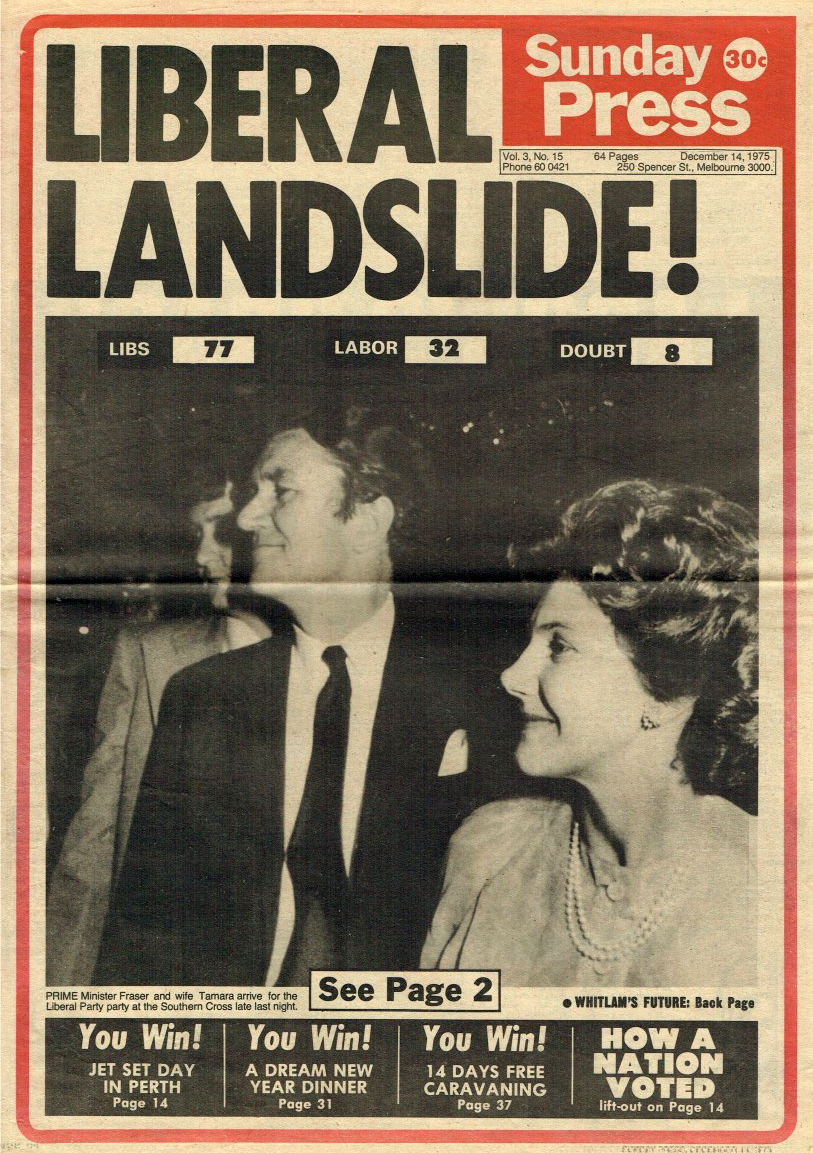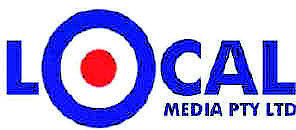
Sunday Observer vs Sunday Press
Just 2½ years on from Maxwell Newton’s launch of the Melbourne Observer newspaper on March 20, 1971, his major opponents – The Herald and Weekly Times Ltd and David Syme & Co. Ltd – joined together to start the Sunday Press newspaper (cover price 15 cents). Its final edition was published on August 13, 1989. An early editor was veteran Melbourne journalist Jack Cannon; later editors included Dallas Swinstead and Colin Duck.
The Herald and Weekly Times Ltd published its Sun News-Pictorial morning newspaper, and The Herald afternoon newspaper, Monday-Saturday. David Syme & Co. Ltd published The Age, Monday-Saturday. Newton’s Sunday Observer had grown too successfully, and both major chains wanted to protect their turf. The Sunday Press was to be a ‘spoiler’.
In the final edition, Sunday Press Editor Martin Thomas reflected on the beginnings: “Little promotion, no home delivery, no newsagency sales and under special agreement to protect The Age, no classified advertising.”
I think that the initial copies Sunday Press were initially printed on the press of Standard Newspapers at Cheltenham, the suburban newspapers subsidiary of the HWT. The final edition came off the The Age presses at their Spencer St headquarters.
“The Sunday Press had been created to fill two gaps in the market, one to present some kind of opposition to the Observer, then selling 200,000 copies and the other to present a united front by the joint owners of the new paper – The Herald and Weekly Times, and David Syme, publisher of The Age – to stop Rupert Murdoch from gaining any kind of foothold on the publishing scene in Melbourne.
“Basically, then, the Sunday Press was born as a “stopper”, without any great enthusiasm by the proprietors, with little foresight of the potential Sunday market.
“They were shortsighted on both counts – the Sunday newspaper market offers the greatest potentiasl of any in Victoria, and Rupert Murdoch was to eventually come anyway,. albeit without an invitation.
“In those early days, the sunday Press settled down to a circulation in the low 80,000s. Staff were minimum and shoestrings seemed in keeping with the tone of things. Around 1976, the paper started to top 100,000 copies and was even turning a modest profit.
“Gradually sales grew, ’til in 1979 sales were level with those of the Observer. Bty 1986, a turning point year, the circulation of the Sunday Press approached 150,000, now ahead of the opposition Observer.
“From then on, every audit of the Sunday Press has shown a record figure. By April [1989], it reached almost 200,000. Since the closure in June of the Observer, sales hover around the 240,000 mark.”
Thomas reflected: “The Sunday Press achievements, ironically, were probably the cause of its demise. We stabbed ourselves in the back, it seems. For the increasing circulation pointed the way to what many had long suspected – that there was a market for Sunday newspapers in Melbouren and country Victoria.”
One of the Sunday Press editorial team was sports journalist Scot Palmer with his Punch Lines column accompanied by Punncline pics of pretty girls. Another was Chief-of-Staff Steve O’Baugh who went on to the Sunday Age, one of the three newspapers to start of August 20, 1989 (the others were the Sunday Sun and the Sunday Herald).
The final edition of the Sunday Press was its biggest (96 pages). By-lines included Denis Williams, Tess Lawrence, Bryan Patterson, Derek Ballantine, Michael Ryan, Dave Pincombe, Ross Brundett, Bill Tuckey, Jack Elliott, Howard Leigh, Graham, Burke, John Larkin, Jon Anderson, Jack Dunn, Ken Piesse, Campbell Reid, Lillian Frank (ghosted by Clark Forbes), gossip columnist ‘Mark Daingur’ (a fictional name coming from a box of Tasmanian tomatoes) and cartoonist Stuart Roth.
